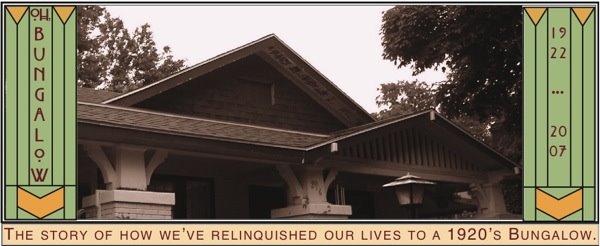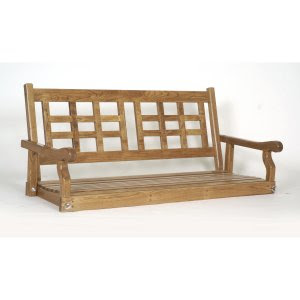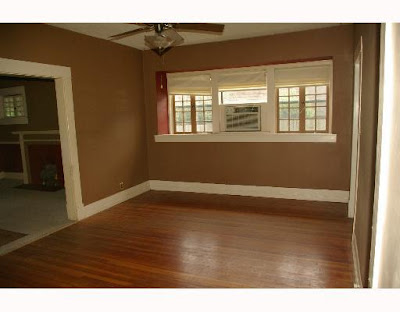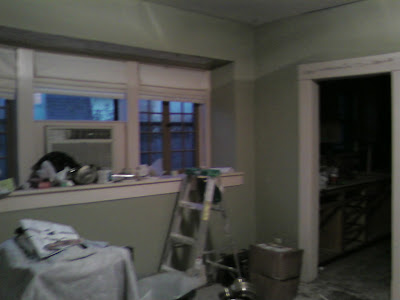I knew we'd go through a lot of sandpaper, but I had absolutely no idea it would be like this.

I'm pretty sure that's not even complete. And there's an awful lot of little 5 inch discs that are hidden under there...
For the middle of the rooms,
we first tried sanding with the SquarBuff, but it just didn't have the muscle. That's when we picked up the drum sander to cut through the finish. Adam worked this machine, so he may have some things to add later, but I can tell you what I saw. The 24 grit paper really cut through, but the finish gummed it up pretty quickly. The top layer was melting and reconstituting on the belt in hard, shiny discs. This was another situation in which no one in town sold belts to fit, the rental store had closed for the weekend, so Adam was scraping what we thought was melted varnish off the belts to reuse them.
Then we hit the middle of rooms with 36 on the buffer. This was the end of last weekend.
This weekend, we picked up the edger and Adam went through edging all the rooms with 20 and 36 grit paper, taking care to level out the lip left by the drum sander. Again, we were flying through 20 grit paper, so I hit up the rental before they closed to get more paper. (BTW, the big boxes DO carry paper for the edgers and the buffers, just not screen) I described what was happening and the uy at the store told me that what was gumming up the discs was wax.
Tip number 2: Be sure to check what kind of finish it is. If it's wax, buy the special wax removing cleaner and clean it off. The rougher grit paper is the most expensive, and changing it frequently is a time waster. Just wasteful all around.
Then we hit each room with the palm sander at 40 grit to take care of any uneven boards. We decided not to cut across diagonally so as to save as much board as possible. One room's boards were
all angled, so this one had to be done one board at a time by hand.
As for that
dip in the floor, we sanded with 36 on the edger and finished with 40 on the palm. It didn't totally get rid of the lip or raised grain, but it did ok and we still ahve intact floor boards.
Then I buffed with 36 yet again, and then hit it with 60. At this point, I realized that the buffer wasn't really eliminating the swirling left by the edger. Adam had to go back to our rental house, so I stuck around over the holiday and wrapped up the round of 60 and took our little palm sander, with 40 grit discs and went around the edges by hand, taking out all the swirling. I also realized that the tack board (or possibly our removal of the tack board) had left a pretty deep scratch in the floor in a perfectly straight line. I sanded this out as much as possible.
Tip number 3: Don't just assume the swirls will sand out. They're a real bitch to get out, and if you can avoid them, do. After we realized that they were going to be a problem, Adam was able to really use the 36 to carefully remove the 20's big whirls and it went much, much faster in those rooms.
We also noticed that the drum sander had left a lot of little ripples, chatter, in the floors that the buffer wasn't getting rid of. I'm pretty sure this is due to the vibrating boards, as Adam had a pretty smooth hand with the drum sander. The shellac disguises a lot of this, but we'll probably see it in the shine of the poly. We'll try a satin finish to get a more waxed look and to dampen the high sheen.
Tip number 4: If you can secure loose boards, by all means do it. If you can get away with just screening and reapplying the same finish that was on before, do it.
Adam came back on Christmas day and we hit the middle of the rooms with 80 and did the edges with 80 on the palm sander.
On Wednesday morning, we returned the edger and they gave us some more screens and a few extra hours. Adam screened all the rooms, while I made a final pass at making sure the swirls were gone. Then we realized we never got rid of the drum sander lip in the kitchen, so I did my best with the palm at 40.
Then we celebrated with burgers and beer.
After lunch, we hit the edges with 120 on the palm sander and I used a carbide pull scraper to get into the corners and around the outlets in our floor.
We vacuumed, tested a few shellacs and called it a day.
Here's the breakdown on sandpaper:
Edging:
For the kitchen, about 8 discs of 20 grit @ $1.50ea= $12
Rest of house,
19- 7"discs of 20 @ $1.50 = $28.50
10- 7"discs of 36 @ $0.82 = $8.20 (we also bought a 3pack of 36 at the big box for about $5)
100- 5"discs of 40 for palm sander. 2 packs of 50 @ $17 = $34
50- 5"discs of 80 for palm sander. 1 pack of 50 @ $17 = $17
15- 5"discs of 120 for palm sander. 1 pack of 15 @ $7 = $7
Middle:
6- belts of 24 for drum sander @ $7 = $42
2- sheets 20 for buffer @ $6 = $12
10- sheets 36 for buffer @ $4.14 = $41.40
5- sheets 60 for buffer @ $3 = $15
4- sheets 60 for buffer @ $5.25 = $21 (from the big box-- always cheaper at the rental!!)
7- sheets 80 for buffer @ $2.50 = $17.50
4- screens 100 for buffer @ $7.50 = $30 (they only charged us for one since they forgot them. I love those guys!!)
5- buffer pads from rental @ $6.50 = $32.50
3- buffer pads from big box @ $7.50 = $22.50
Grand total in sandpaper:$333.60
plus rental fees ($175)
$508.60
























